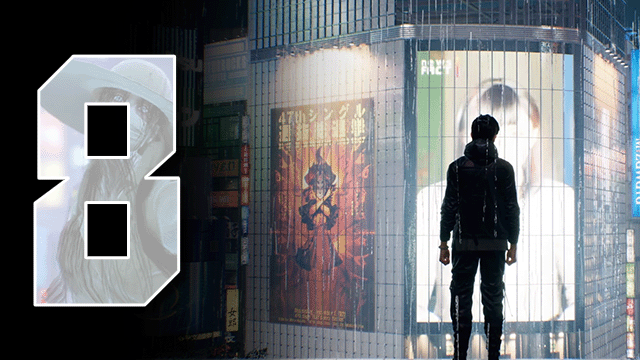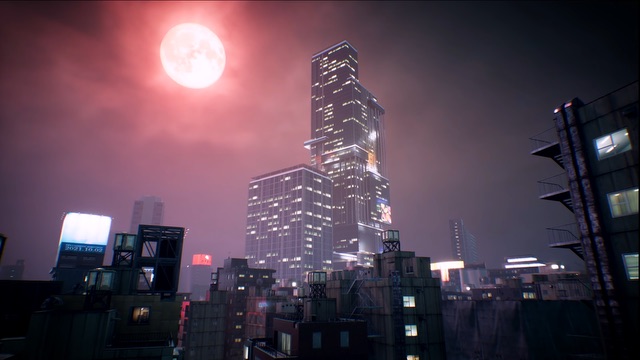Ghostwire: Tokyo is Tango Gameworks‘ third title, and the first it’s produced outside of The Evil Within series. It’s memeorable introduction to the world by Ikumi Nakamura gave players high hopes that it be a quirky outlier in the world of AAA productions. Nearly two years later, we’ve finally got a chance to play it and see if it lived up to expectations.
Am I the last living soul?
In Ghostwire: Tokyo, you play as the last living soul in Shibuya. You play as Akito, who is near death due to a traffic incident. However, he’s saved as his body is inhabited by KK, a spirit running from a mysterious force that soon covers the area with a mysterious fog. As the fog sets in, 200,000 people disappear, leaving only their clothes and belongings behind. Unfortunately, just as quickly as they vanish, malevolent spirits called Visitors arrive to take their place. Fortunately, Akito’s meld with KK gives him the powers he needs to fight these foes.
Your first destination in the game is to check on Akito’s sister, who ends up having something to do with the events that are transpiring, and we’re introduced to the villains of the game. A group of people with Hannya masks that are incredibly powerful. They’re also the same group KK was running from when the game began.
The objective here is to unravel the mystery of the fog and to rescue Akito’s sister. You’ll also have to dive into KK’s past as a cop and find out his role in this whole thing.
Tokyo Drift
This journey will take players across a large, lovingly-crafted chunk of Shibuya. As I stated in our preview, exploration is limited by the fog. If you enter the fog, you’ll immediately take damage and have to turn back. Fortunately, cleansing torii will push the haze back and allow you access to new areas.
While Shibuya is technically an open world, the fog funnels you into specific areas, making the game relatively linear. You can backtrack and complete side missions or pick up collectibles you’ve missed. Still, the way forward in the story is always fairly narrow. I liked the focus, but those expecting a traditional open world will likely be disappointed at how frequently the game bars your path. There’s no seeing something and going to it. Instead, you’ll have to hope the story curves you toward that area at some point.
There’s nothing terribly innovative about Ghostwire: Tokyo, though I thoroughly enjoyed the presentation. Its urban setting lends itself well to vertical exploration, and one of Akito’s powers lets him grapple a flying tengu to boost to new heights. However, though it’s beautiful to behold, this Tokyo lacks substance. There’s no emergent gameplay to be found here, and exploration leads to the same things to collect or variations on the same side quests. This environment is primed for random and memorable events to occur, but it feels dead, even for a city filled with spirits.
Spiritual Jutsu
Despite technically being a first-person shooter, combat is Ghostwire: Tokyo is more anime than Call of Duty. Instead of firearms and grenades, you’ll be using spiritual energy and paper talismans. There’s also a fairly strong bow, but ammo for it must be found or purchased. Unfortunately, this aspect of the game became tiring over time. Enemies are bullet sponges, and I never found Akito’s powers particularly exciting.
He has a Wind attack that is weak but can be fired rapidly, a water attack that fires in an arc but is very short-ranged, and a powerful fire attack that can be charged up and tossed to create an explosion. The talismans, which are used as secondary weapons, can be planted to create a field that stuns enemies or used to create concealment for Akito to sneak past foes. Stealth attacks are also available (and encouraged), and can quickly defeat most lower-tier enemies.
The crux of Ghostwire: Tokyo’s combat is exposing the Vistors’ cores and ripping them out with ghostwire. Doing this defeats them and nets you some ammo and HP, but it also leaves you momentarily vulnerable. Fortunately, you can rip out multiple cores at once, so the idea is to make multiple ghosts vulnerable at once and then execute them simultaneously. However, it rarely works out that smoothly unless you can get enemies to group up.
The biggest issue here is that enemies have too much HP and most of Akito’s attacks feel like they have no oomph. The Wind elemental especially just feels like you’re throwing empty cans at ghosts. Of course, there’s a big ol’ skill three that you can use to upgrade attacks, but these are so incremental that they never feel like a significant boost.
Players also get a spiritual shield they can defend with so enemy attacks cause either partial damage or no damage if it’s raised in a perfect block. However, I rarely found myself using the shield except for when I was facing bosses. It was just easier to move away from enemies than to attempt to block them.
The main factor that makes the combat interesting is that it fits the story and aesthetic. You’re fighting spirits from Japanese folklore, and it makes sense that you’d do it with a sort of magical Jutsu. Also, despite my disappointment with the execution, combat is paced out enough to where it doesn’t get annoying.
Sneak attack
I also found that the game overuses stealth mechanics. As stated above, players can close in on unaware enemies and hit them with a sneak attack that usually ends with a kill. However, it’s something we’ve seen in a hundred other games, and Ghostwire: Tokyo doesn’t do anything to innovate on the concept.
This game suffers from an issue many titles with stealth do, and that’s the fact that if one enemy in an area sees you, then all of them do. You can use the bow and arrow to stealth kill an enemy from afar, but it frequently takes at least two hits to do so. As soon as they get hit, it breaks their stealth, and you’re back to fighting like normal.
Fortunately, most of the game is stealth optional, but some segments force it. These were my least favorite parts of Ghostwire by far, and I couldn’t wait until they were over.
Quantity over quality
I played the game on a PS5, and I highly recommend everyone uses one of the performance modes. The quality settings are pretty but drop the framerate enough to detract from the experience. I also detected a bit of input lag when playing on quality that was bad enough to make me feel a bit motion sick. I’ve experienced the same thing when playing Bloodborne, and I assume that, like with that game, Ghostwire: Tokyo has some framepacing issues on certain graphics modes.
Fortunately, even on performance settings, the game is good-looking and brings Tokyo to life with high-res textures and excellent lighting effects. It was a relatively bug-free experience as well, and I never ran into anything game-breaking.
Ghostwire: Tokyo: The final verdict
Ghostwire: Tokyo’s biggest problem is that it takes very few chances. Unfortunately, the gameplay is just too familiar for its own good. It’s got a great premise, and I loved its version of Tokyo. However, the story and setting are in a framework that’s all too familiar. It also has a hard time figuring out whether it wants to be a linear or open world title.
Despite these issues, it has a compelling story, and I enjoyed the journey from start to finish. It’s great seeing an accessible AAA title like this utilize Japanese folklore as its inspiration and shows just how far we’ve come from the 90s where JRPGs were downplaying those sorts of things.
We played Ghostwire: Tokyo for around 40 hours on normal difficulty and completed the main story and a significant portion of the side quests via code provided by PR.
-
Beautiful rendition of Shibuya.
-
Story keeps you guessing.
-
Great integration of Japanese folklore.
-
Combat gets stale.
-
Setting is underutilized.
-
Open world rarely feels open.












